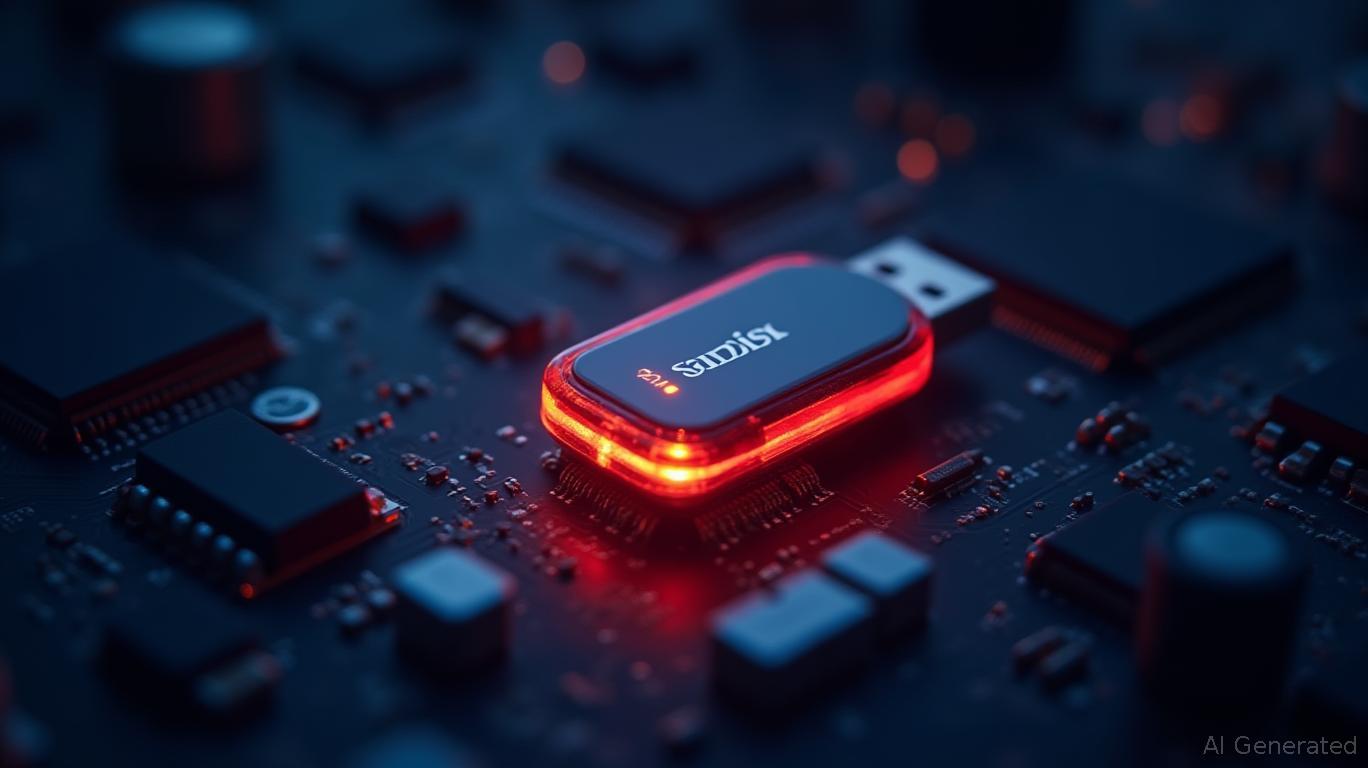SanDisk's Secondary Offering: Navigating Dilution for Long-Term Value Creation

Investors in
(NASDAQ:SNDK) now face a critical decision: how to balance the near-term dilution risk of its recently announced secondary offering against the company's compelling long-term growth narrative. With NAND demand surging in AI, cloud computing, and edge computing applications, the $39.82-per-share valuation offers a rare entry point for those willing to look past short-term headwinds. Here's why the stock could be a buy—despite the dilution.The Secondary Offering: Dilution Math and Strategic Rationale
SanDisk plans to sell 17 million shares, with an additional 2.55 million via the greenshoe option, marking a 8.4% to 9.6% dilution of its current 202.9 million outstanding shares. At the current price of $39.82, this offering could raise up to $690 million (assuming greenshoe exercise). The proceeds will likely be used to retire Western Digital's (WDC) remaining debt tied to the separation, reduce leverage, and fund R&D for next-gen NAND technologies like BiCS 8.
While dilution is a legitimate concern, the strategic focus here is clear: SanDisk is strengthening its balance sheet post-separation. With $1.5 billion in cash reserves and an EBITDA of $858 million (despite Q3's goodwill impairment charge), the company is financially resilient. The move could also signal confidence in its standalone prospects, as it aims to capitalize on a global NAND market expected to grow at 12% CAGR through 2030.
Valuation: Undervalued at $40, Targeted at $70+
At $39.82, SanDisk trades at just 4.7x its trailing 12-month EBITDA of $858 million. Compare this to peer Kioxia Holdings (6610:Tokyo), which trades at 6.2x EBITDA, or Micron Technology (MU), at 6.8x. Analysts at Goldman Sachs and Morgan Stanley have set price targets of $65–$70, citing SanDisk's leadership in advanced NAND (e.g., its 232-layer BiCS 8) and the secular tailwinds of data proliferation.
The disconnect between current valuation and fundamentals lies in short-term noise: Q3's $1.93 billion GAAP loss (due to a goodwill impairment charge) and a 451% sequential jump in operating expenses. However, non-GAAP metrics tell a better story: a $0.30 loss per share and a Q4 outlook of breakeven to modest profit. The impairment is a one-time adjustment, not a reflection of ongoing operations.
Why NAND Demand Justifies the Optimism
SanDisk's long-term thesis hinges on its dominance in high-margin NAND solutions. The company is a pioneer in 3D NAND, and its BiCS 8 technology—boasting 1.6TB per chip—positions it to capture premium pricing in AI and hyperscale data center markets. With global data creation expected to hit 208 zettabytes by 2030 (up from 88 zettabytes in 2023), SanDisk's focus on enterprise and cloud storage could drive revenue growth even amid near-term supply-demand imbalances.
Meanwhile, the company has already begun strategic pricing actions. Management noted in Q3 earnings that it's “reducing supply to align with demand” and implementing price increases. This discipline should stabilize margins over time.
Risks to Consider
- Short-Term Dilution Impact: The 9.6% potential dilution could pressure the stock in the near term, especially if investor sentiment toward semiconductors remains cautious.
- Margin Pressures: Gross margins dipped to 22.5% in Q3, down from 25% in Q2, reflecting ongoing supply chain and competitive pressures.
- Product Quality Concerns: Recent reports of SSD reliability issues in photography and filmmaking markets could weigh on brand perception.
The Bottom Line: Buy the Dip
Despite these risks, SanDisk's valuation, cash reserves, and strategic focus on high-growth NAND segments make it a compelling contrarian play. At $39.82, the stock offers a 50% upside to consensus targets, with a low-risk entry point given its $1.5 billion cash buffer. Investors should prioritize the long game: NAND's role in AI, autonomous systems, and cloud infrastructure is only expanding.
The secondary offering may sting in the short term, but for those willing to look beyond the next quarter, SanDisk represents a rare opportunity to own a tech leader at a post-recession discount. This is a stock to buy on dips—$40 is the starting line for a multiyear growth story.
Action Item: Accumulate SNDK shares at current levels, with a stop below $35 to manage dilution risk. Set a target of $60–$70 over the next 12–18 months.

Comments
No comments yet